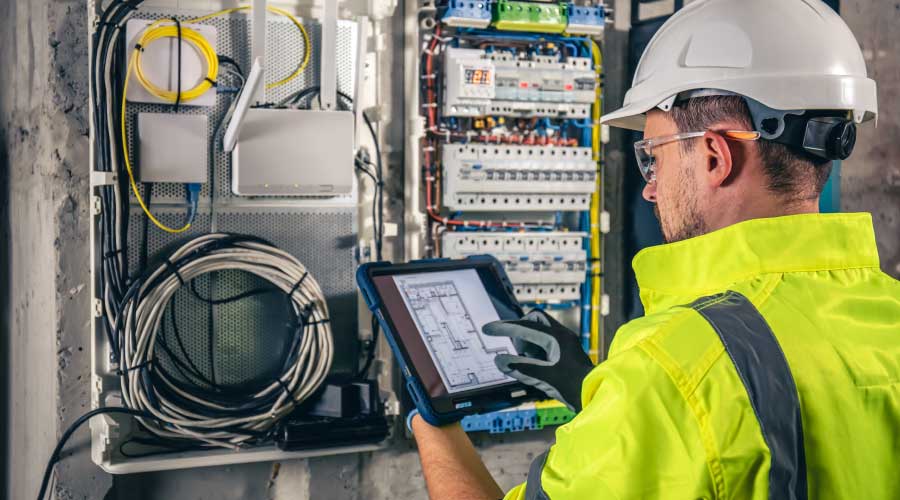
How Can Facilities Management Affect Workplace Well-being?
Retrofitting spaces is one way to improve occupant health. October 12, 2023
By Jeff Wardon, Jr., Assistant Editor
At times, building occupants can get overwhelmed and stressed out at work. Facilities management can help counteract this by creating spaces for stressed employees to decompress or even focus on their work, among other things. To help alleviate the stress for occupants and encourage their wellness, Paula Spiese, formerly director for sustainability and well-being at Ernst & Young, and Paul Head, director at Nuvolo, will present the session “How Workplace Well-being Programs Can Support Employee Wellness and Organizational Performance” at NFMT Remix October 25 to 26 in Orlando, Florida.
NFMT: How does an organization's approach to facilities management affect employee well-being, and what strategies can be employed to create a more comfortable and conducive work environment?
Spiese: To address this, we emphasize the importance of adopting a comprehensive approach. Facilities management cannot exist in isolation. You need collaboration between the facilities department, HR, technology groups and training teams. This holistic approach considers the physical environment, policies and supporting technology. We also stress the significance of recognizing the individual needs of employees rather than making blanket assumptions based on their roles. Also, a comprehensive approach encompasses aspects like sensory comfort, environmental quality and psychological considerations, such as biophilia, views and community integration.
Head: It is essential to note that having a robust strategy is just the beginning. Transforming these strategies into tangible policies, processes and effective change management programs is equally critical. A strategy can only yield results when executed effectively.
Spiese: Yes, and incorporating regular health assessments and feedback mechanisms ensures that the strategies align with employees' evolving needs and preferences.
NFMT: How does technology play a role in enhancing workplace well-being through facilities management, and what emerging technologies are transforming office space management?
Head: While not every organization can build elaborate campuses like Google or Apple, many can embark on retrofitting endeavors to enhance the well-being of their workforce. This involves addressing factors like lighting, sound environments, and biophilic elements. Even within existing structures, reconfiguring office layouts to prioritize natural light and open spaces can significantly impact employee well-being. Retrofitting lighting, air quality systems, and incorporating elements like living walls are effective measures. Moreover, sound masking technologies can create both collaborative and focused spaces.
Spiese: The integration of advanced digital technologies to monitor environmental quality is an emerging trend. Internet of Things (IoT) and AI-driven analytics can monitor parameters like CO2 levels, humidity, air quality, temperature and sound levels. Also, technologies like digital twins can simulate and optimize settings for optimal employee comfort and productivity.
NFMT: In what ways can facilities management contribute to promoting mental and physical health among employees and building occupants? What best practices should businesses adopt for the overall well-being of their workforce?
Spiese: Facilities management plays a key role in supporting employee health. It involves providing spaces that allow employees to recharge, such as relaxation or meditation areas, as well as spaces for physical activity. Recognizing the diverse needs of employees is essential, from quiet spaces to collaborative zones. Additionally, offering nutritious food and beverage options contributes to overall well-being. Regular health assessments and check-ins with employees, along with monitoring the effectiveness of implemented strategies, are best practices in this regard.
Head: It is crucial to emphasize that this is not solely the responsibility of facilities management. Collaboration between facilities management and HR, as well as a leadership-driven approach, is essential. Organizations should view this holistically, considering not just physical facilities but also remote work environments in a post-pandemic world.
Spiese: Absolutely, and even small companies or satellite offices can make meaningful improvements that align with leading practices. It doesn't have to be overwhelming or expensive.
NFMT: How can companies balance cost-effective facilities management with the provision of amenities and services that boost employee satisfaction and well-being?
Head: A collaborative approach that includes a feedback loop is key. Organizations can align their investments with strategic goals for employee well-being. This includes optimizing existing facilities, making practical improvements, and considering feedback from employees to determine the most effective amenities.
Spiese: Also, organizations can identify opportunities for cost savings while also enhancing well-being. For instance, energy-efficient lighting or HVAC systems that improve both sustainability and employee health and comfort can be part of a holistic strategy.
To learn more about the role of facilities management in employees and occupants’ well-beings, be sure to check out Spiese and Head’s session at NFMT Remix. Register for Remix here.
Jeff Wardon, Jr. is the assistant editor for the facilities market.
Next
Read next on FacilitiesNet












